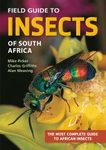![Attachment Devices of Insect Cuticle Attachment Devices of Insect Cuticle]()
Click to have a closer look
About this book
Contents
Customer reviews
Related titles
About this book
Throughout their evolution, living creatures have developed systems to attach themselves to a variety of substrate textures. As is the case in many technical systems, animals use friction and adhesion to generate an attachment force for overcoming drag. This volume summarizes more than ten years of ultra structural and experimental studies on insect attachment systems and presents an up-to-date overview of this subject. Many examples are presented and the general rules of the interrelationship between the construction of attachment systems and the function are outlined showing the principles of morphology and ultra structure of such systems. The principles of design involved in the attachment systems described may inspire new ideas relating to the biomimetics of new surface-active materials. This volume provides a useful introduction to biological attachment and should be of interest to biologist, zoologist, materials scientists and engineers.
Contents
Foreword. Preface. 1. Friction and adhesion: fundamentals. 2. Insect cuticle: structure and properties of the material. 3. Cuticular protuberances of insets. 4. Principles of cuticular attachment in Arthropoda. 5. Frictional systems. 6. Dragonfly and damselfly head-arresting system. 7. Intersegmental frictional devices. 8. Wing-locking devices. 9. Attachment pads. 10. Secretions in frictional systems. References. Index.
Customer Reviews
By: S Gorb
305 pages, B/w plates, illus, figs, tabs
From the reviews: 'This is an excellent introduction to biological attachment and will be of interest to biologist, especially entomologist, materials scientist and engineers.'Entomofauna Zeitschrift Fur Entomologie, 23, 2:13-28 "This recently published 'big review' in book form is a logical step. ! The result is a concise book which is well written and based on the personal experiences of the author. Simplicity is a big advantage as there are too many examples ! . It is of interest not only for biologists (including molecular biologists), zoologists, entomologists and ecologists, but also for specialists from material science and engineers. ! I recommend this book to all students and scientists ! ." (F. Weyda, European Journal of Entomology, Vol. 102, 2005)


































